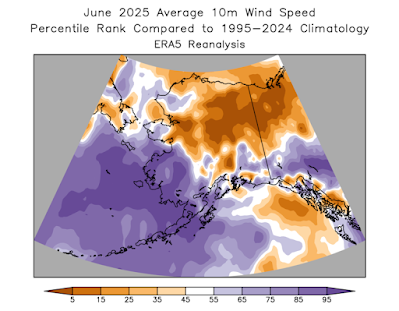Back in March of 2024, I mentioned the new AI weather model developed by the world-leading European forecast center (ECMWF), and it's exciting now to be able to comment on a major recent upgrade to the ECMWF's AI forecasting technology. In short, ECMWF has released a new version of their AI system (AIFS) that produces an ensemble of outcomes, similar to the ensemble output from traditional physics-based models.
https://www.ecmwf.int/en/about/media-centre/news/2025/ecmwfs-ensemble-ai-forecasts-become-operational
In many respects, this latest AI system is now significantly better than the ECMWF's own IFS (Integrated Forecasting System), the traditional physics-based model that has been developed over decades, and that grinds out its forecasts on large supercomputers. In contrast, the AIFS is "data-driven", meaning it learns from the historical data with no computational constraint from the laws of physics; and its realtime forecasts run extremely quickly with a tiny fraction of the computing resources.
Here's a chart to illustrate the realtime performance of AIFS forecasts initialized from December 2024 through June 2025:
The AIFS-ENS model (black line) has the highest correlation of 30-90°N 500mb height anomalies, and for lead times beyond about a week it's dramatically better than the first AIFS version that had only a single ensemble member.
It's interesting to have a look at where on the globe the superior performance is to be found. The maps below show the improvement of AIFS over the traditional IFS ensemble, measured in terms of the percentage change in variance explained for 500mb height at various lead times. For instance, if the correlation coefficient improves from 0.8 to 0.85, that's a 13% improvement in variance explained. Interestingly, the improvement seems to emerge first in the tropics at only 2-3 days into the forecasts, and then the higher latitude forecasts start to benefit - especially over the North Pacific and North America - after 4-5 days.
The spatial signals become very noisy at longer lead times because of the rather small sample size, but averaging the results across all longitudes reveals that the high latitudes see the most improvement beyond 7 days:
The significant improvement in the Arctic will be very encouraging for Alaska forecasters, because weather predictability is lowest in the high latitudes to begin with. Redoing the first figure above for 60-90°N, we see a nice boost beyond 10 days (see below). To be precise, the anomaly correlation at day 15 goes from +0.21 (IFS) to +0.27 (AIFS-ENS), and while that's still too low to be useful, it represents a 57% gain in variance explained.
It can't be overstated how remarkable it is to see performance gains like this from such young technology; presumably there is room for considerably more improvement in the years ahead.
Finally, readers may ask where the AIFS-ENS forecasts can be viewed? Unfortunately, I'm not aware of any free websites that provide AIFS-ENS maps that include Alaska, with the exception of ECMWF's own site, and that's not particularly user-friendly:
https://charts.ecmwf.int/?facets=%7B%22Range%22%3A%5B%22Medium%20%2815%20days%29%22%5D%2C%22Type%22%3A%5B%22Forecasts%22%5D%2C%22Component%22%3A%5B%22Surface%22%2C%22Atmosphere%22%5D%2C%22Product%20type%22%3A%5B%22AIFS%20Ensemble%20forecast%22%5D%7D
I expect in due course the AIFS-ENS data will be added to sites like Tropical Tidbits, so check back there (under "Ensemble") occasionally.




















































